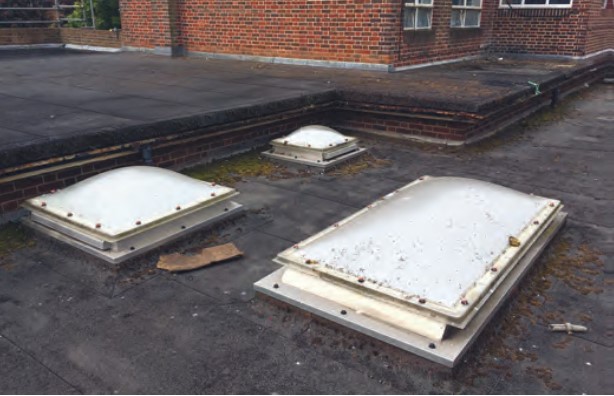Rob Tyler, Partner and Education Sector Lead discusses the importance of condition surveys and how they can help in developing estate strategies, in the Spring 2022 ISBL publication of The Voice.
For any education provider, their buildings are arguably their greatest asset but also their biggest risk. In the short term, the likelihood is that under-investment in education buildings will continue.
Without understanding the condition of the estate, those responsible will continue to grapple with the challenges of balancing budgets alongside ensuring the continued safety of building users and providing the best possible teaching environment. Those with a strong grasp of the condition of, and wider strategy for, their estates will reap the greatest benefits. Those who do not have this data to support capital works will not.
For schools maintained by local authorities, the ultimate responsibility for the condition of your site will reside with them. For academies and multi-academy trusts (MATs), however, the responsibility resides with the responsible person. Regardless of your establishment, the need to understand condition does not diminish. A condition survey and the development of an estate strategy is a critical starting point in understanding your estate.
The Department for Education (DfE) has procured the Condition Data Collection (CDC) programme, which aims to collect condition data on 22,000 education establishments between 2021 and 2026. This is the third programme of its kind and aims to identify and prioritise investment in schools. At the recently held Education Estates conference, I attended a presentation on CDC, which stated that the total condition needs identified to date stands at a staggering £11.4 billion. In recently published guidance for the Condition Improvement Fund (CIF) and for CDC itself, the DfE identified that the CDC report is not a condition survey, and the data collected is high level. It is therefore crucial that responsible bodies are not reliant on this information and actively manage their estates to be aware of both the condition and potential liabilities associated.
The condition survey
It is vital that education buildings and wider sites are maintained and improved in a proactive way to ensure reactive maintenance and repairs do not become the norm. There are several tools that can be implemented in this process, and understanding condition is the start of this journey.

The condition survey is an inspection undertaken by qualified individuals to assess the physical condition of the components forming the site. A well-rounded and all-encompassing survey should capture the buildings’ fabric, external parts, and mechanical and electrical services. The report produced will be supplemented by condition survey data, which will provide key detail around the condition of building components, each of which will be provided with a condition grade from A-D (good to bad) and a priority rating 1-4 (urgent to more than 5 years).
Once graded, each element should be quantified and a cost attached for recommended works, along with details about the element’s lifespan and replacement year, if required. This is important to allow longer-term, lifecycle costs and projections to be made over a given period, and it is this information that will inform your strategy around prioritisation of work, or potentially disposal/re-build of buildings.
Finding the funds
A further consideration when understanding the condition of your estates is around securing capital funding. Knowledge of the funding available, coupled with a wider strategic plan, allows you to directly focus on specific areas of capital improvement. This could be in many ways, including apportionment of School Condition Allocation (SCA) or bid-based funding such as CIF. Again, this core data and understanding of condition and priorities across your estate will be instrumental in your approach to justifying works and securing much-needed funding.
At Seaford Head School in East Sussex, for example, a condition survey of its estate showed it to be in a poor condition. As a stand-alone academy, the avenue to secure capital funding for estate improvements was via CIF so, following completion of their survey, the school developed a strategy around bidding through CIF to address life-expired elements across its two sites. As a result, eight capital projects totalling £3m have been delivered, ranging from roof replacement to replacement of a life-expired building. The original condition survey was pivotal in allowing the school to understand its estate and justify the urgent need for funding in a proactive way.
Some organisations experience a transition from bid-based funding to SCA, either through growth or joining an existing, eligible MAT, and the funding is also applicable for maintained schools. Understanding where to allocate SCA is important but this is something that can only be fully achieved once the condition is known and understood.
For example, Leigh Trust in Birmingham has moved on from obtaining funding and delivering projects utilising CIF and is now allocating SCA funds. To assist with this transition, condition surveys are being undertaken across the estate to support the planning of future works. Tom Blewitt, Chief Operating Officer of the Trust, explains. “The move from bid-based funding to SCA was significant for our Trust and we are now working on developing a wider estate management plan for our estate, ensuring we are allocating the funding in the areas that need it most. This plan will be critical in successfully maintaining and developing our estates in an organic way and building toward a more sustainable future.”
For the Senior Leadership Team and responsible person in any school environment, there are continuous challenges, pressures and factors that determine the success of a school. The management of your estate should not be a contributing factor to this ever-growing list of duties and concerns. By implementing the correct asset management tools through a condition survey and estate strategy, you will have at your disposal the information and vision to ensure you are proactive in the management of your estates.